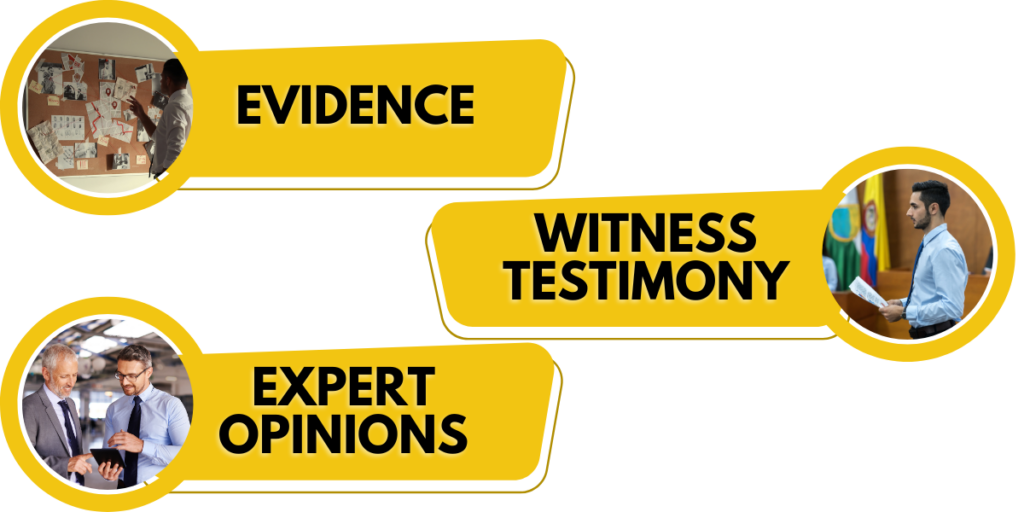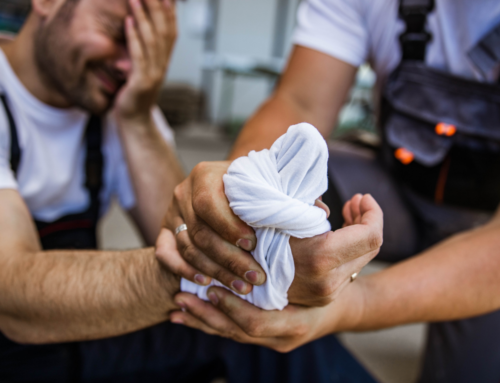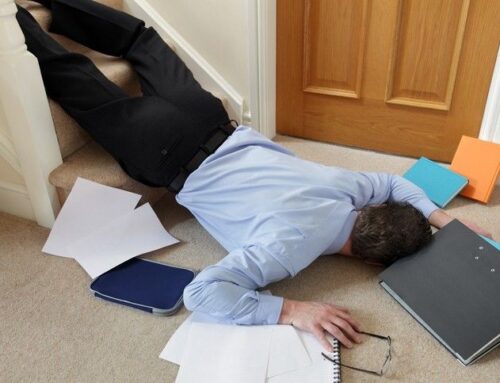A Slip and Fall injury can occur anywhere, from private residences to public spaces. Not only can slip and fall accidents cause serious physical harm, but they can also have long-term effects on a person’s health, finances, and quality of life. Falling is the most prevalent cause of nonfatal trauma-related hospital admissions for people aged 65 and above, and it also accounts for almost a third of all slip and fall casualties.
The number of individuals seeking medical attention following a slip and fall accident in the United States exceeds one million, with over 2,000 individuals doing so daily. Emergency room visits due to falls are 12% more common in cases involving slip and fall accidents.
In today’s post, we will talk about the following:
- Understanding Slip and Fall Accidents
- Liability in Slip and Fall Injury Cases
- How much compensation do you get for a fall?
- Steps to Take after a Slip and Fall Accident
- Legal Process in Slip and Fall Lawsuits
- The most recommended law office for Slip and Fall Injury Cases
Let’s go into details to protect your rights and strengthen your case.
Understanding Slip and Fall Accidents
What Constitutes a Slip and Fall Accident?
Slip and fall accidents occur in the home, workplace, public areas, and commercial establishments because of hazards on stairs, elevators, ramps, flooring, objects, and walkways. These hazards cause an individual to lose balance, which can result in minor bruising and sprains, severe fractures, brain injuries, and spinal cord injuries from a slip and fall disaster.
Detailed List of Causes of Slip and Fall Accidents
- Wet or Slippery Surfaces:
- Fluid spills over the floor, including water, oil, and grease.
- Recently mopped or polished surfaces
- Tracks left by rainwater or melted snow
- Walkways with trash or wet leaves
- Uneven or Defective Flooring
- Damaged tiles
- Uneven paths or pavement
- Damaged floorboards, carpets, rugs, or mats
- Lack of Proper Lighting
- Poor lighting in stairwells or corridors
- Flicking or broken lights
- Dangers of things covered in shadow
- Absence of Handrails or Guardrails
- No handrails on stairs or ramps
- Missing or unsteady raised platform guardrails
- Lack of support for balance and stability
- Blocked or Messy walkways
- Items in walkways or aisles
- Wires or cables crossing over the pathway.
- Overcrowded or blocked walkways
- Slippery floors due to debris
- Weather Conditions
- Driveways or parking lots with ice or snow
- Wet or slippery surfaces during rainstorms
- Poor visibility due to fog or mist
- Not enough warnings or signs
- Lack of signage indicating damp or slippery floors
- Ramps, steps, and slope changes not shown
- Lacking hazard warning indications
- Clothing or footwear Factors
- Putting on the wrong shoes that don’t grip well
- Clothing that is too loose and can catch on things
- Not paying attention to shoelaces or long clothes
- Rushing or Distractions
- Moving too fast without looking around
- Phone calls, texts, and device use while walking
- Not seeing path risks or barriers
- Age and Physical Health Factors
- Older people with poor vision, balance, or mobility
- Physical limitations influencing stability
- Health disorders that increase fall risk
- Present or current injuries such as fractured or sprained foot, bruises, or swellings
How much Compensation do you get for a Fall?
Although cases vary, slip-and-fall settlements often range from $10,000 to $50,000, depending on several factors. These factors include:
- The severity and nature of the injuries sustained in the slip and fall accident.
- The medical expenses incurred for treating injuries, including hospital bills, surgeries, medications, rehabilitation, and maintenance.
- Lost wages or income resulting from the slip and fall injury.
- Non-economic pain, such as pain and suffering, emotional distress, and other mental health issues.
- Personal property damaged in the slip and fall accident, like mobile phones, jewelry, etc.
- The insurance coverage of the liable party.
The Impact of Negligence (Carelessness) in Slip and Fall Injury Cases
1. Determine Who is Liable
The level of negligence is crucial in figuring out who is responsible for the accident. If someone didn’t take enough care, like the property owner or manager, they could be held accountable for the slip and fall.
2. Injury Compensation
Carelessness has an impact on how much compensation the victim receives. Suppose a person or property was negligent in causing the accident. In that case, they may be liable for the victim’s expenses, such as medical bills and lost wages.
3. Following the Rules
Negligence means someone didn’t follow the rules meant to keep people safe. If a building owner or manager didn’t do what they could to keep accidents from happening, they could be sued.
4. Evidence Required
Proving negligence is essential for slip and fall injury cases. The victim must prove that a business, property owner, or person was careless. This can include repair logs, witness statements, security camera video, and the advice of experts.
5. Evaluating Mistakes
Injury victims and property owners or managers often share responsibility for accidents. How heavy each party’s mistake was may affect the case and the compensation the victim gets.
6. Discussion
Negligence affects the slip and fall injury case outcomes. The person at fault may have to pay more to compensate the victim if their negligence caused the accident alone.
Slip-and-fall legal cases are multistep. Here’s an essential guide to the legal system:
1. Get Medical Help
Immediately consult a doctor if you hurt yourself in a slip-and-fall accident. Your health matters most.
2. Document the Accident
Take pictures of where the accident happened, injuries, and any hazards that may have caused the fall. Write down information like the date, time, and place.
3. Report the Incident
Notify the building’s management or owner of the slip and fall incident. Have an incident report completed.
4. Gather Evidence
Gather evidence to support the slip and fall injury case, including witness statements, security footage, and maintenance records.
5. Consult a Personal Injury Attorney
Contact a local personal injury attorney near you for professional guidance and assistance with your slip and fall injury case.
6. Demand Letter
Your personal injury attorney may send a demand letter to the property owner’s insurance company, explaining your injuries and the amount of money you want to demand.
7. Negotiation
A settlement or payment offer from the insurance company is possible. Allow your personal injury lawyer to negotiate on your behalf to have a good deal.
8. Filing a Legal Case
Suppose you and the property owner are unable to agree. In that case, your personal injury attorney may sue the owner for carelessness.
9. Investigation Stage
Both sides must show proof and case-related papers to decide who is responsible for seeking pay for harm and injuries.
10. Settlement Conference
Before the case goes to trial, there may be a settlement meeting where both sides try to negotiate a deal.
11. Trial
When parties cannot agree, the slip and fall injury case will proceed to trial, where a judge or jury decides.
12. Decision or Verdict
The judge or jury will decide if the property owner was negligent and whether you are entitled to compensation.
13. Appeal (if necessary)
There will be a motion for an appeal if you or the property owner disagree with the result of the legal case.
Remember that how your case stands in court will depend on the details of your slip and fall accident. Talk to an experienced personal injury attorney to help you through the process.
The Role of Evidence, Witness Statements, and Expert Opinion in a Slip and Fall Case

Evidence, witness statements, and expert opinions are all important in a slip-and-fall case for showing fault, establishing liability, and figuring out how bad the injuries are. Here is an easy-to-understand and complete description of what they do:
1. Evidence:
- Physical Evidence
Photographs of the accident scene, the dangerous situation that caused the fall, and the injuries are all essential pieces that show what happened.
- Maintenance Records
Maintenance and inspection plans for the property where the slip and fall happened can show if the owner kept the area safe.
- Incident Reports
Suppose you file an incident report with the property owner or manager right after the accident. In that case, you can track what happened in the incident.
- Medical Records
Medical records that describe and list injuries and treatments can show how bad the impact was from the slip and fall.
2. Witness Testimony
- Eyewitnesses
Personal statements from people who saw the slip-and-fall accident can support the victim’s statements
- Credibility
Witness statements help establish credibility and back up the facts of the slip-and-fall accident, especially if the incident details are inconsistent.
- Expert Witnesses
Expert witnesses, like doctors or accident reconstruction experts, can give their professional opinion on what caused the slip and fall, how bad the injuries were, and what level of care should be expected.
3. Expert Opinions:
- Liability Assessment
Experts can figure out who is responsible for what by looking at how the property is maintained, how safe it is, and how well it follows all the rules and protocols for buildings.
- Injury Evaluation
Medical professionals can determine the severity of the injuries, the victim’s health and well-being, and the long-term effects of the accident.
- Reconstruction Analysis
Accident reconstruction experts can look at the details of the slip-and-fall, such as the state of the surface, the lighting, and any environmental hazards, to figure out what happened and who is responsible.
The bottom line is that a solid slip-and-fall case needs facts, witness statements, and the opinions of professionals. Their Evidence strengthens the injured party’s claim for damages and slip-and-fall injury compensation by laying out the facts and giving credibility to the claims made by the party.
Potential Outcomes of a Slip and Fall Injury Legal Case
A slip-and-fall lawsuit has three possible results: a settlement, negotiations, or a trial.
1. Settlement:
- Definition: The slip and fall victim (the claimant) and the property owner or insurance company (the defendant) settle the case without going to court.
- Process: The two sides discuss and agree on how much money should be given to the hurt person. The settlement may include money for medical bills, missed wages, pain and suffering, and other damages.
- Benefits: Settlements can speed up the process, keep things from going badly during a hearing, and let the slip-and-fall accident victim get paid faster.
2. Negotiations:
- Definition: Discussion between the claimant and the defendant, often facilitated by their respective personal injury attorneys, to reach a settlement agreement.
- Process: Conversational offers, counteroffers, and compromises to reach an agreement that satisfies the interests and needs of everyone.
- Benefits: Negotiations can save time, money, and worry by reaching a fair settlement without a trial.
3. Trial:
- Definition: If talks fail to compromise, the slip-and-fall case may be taken to court, where a judge or jury will decide the result.
- Process: When there is a trial, both sides offer their Evidence, witness statements, and arguments to support their case. The judge or jury will assess the facts and decide who is responsible and how much money should be paid.
- Outcome: The decision at trial could favor the claimant (giving them money) or the defendant (denying they are responsible). If the client wins, the court may decide how much compensation they should get in damages for the slip-and-fall injury case.
A slip-and-fall injury legal case can end in a settlement through talks or a trial where the court decides. Every result has pros and cons, and the best way to handle the situation will depend on the goals of everyone involved and the events that happened.
Personal Injury Attorney Near Me
The Law Office of Frank A. Cetero, Esq, is in Long Island, West Islip, and Smithtown, New York. Atty. Frank A. Cetero is an experienced personal injury attorney with decades of experience handling personal injury. He knows how to negotiate settlements, prepare for cases, and fight for the rights of people with slip-and-fall injury cases. He is a reliable lawyer for people who have won several cases and gave the victims of slip-and-fall accidents the compensation they need.
If you or someone you care about has been hurt in a slip-and-fall accident or any other kind of personal injury case, Contact the Law Office of Frank A. Cetero immediately.



